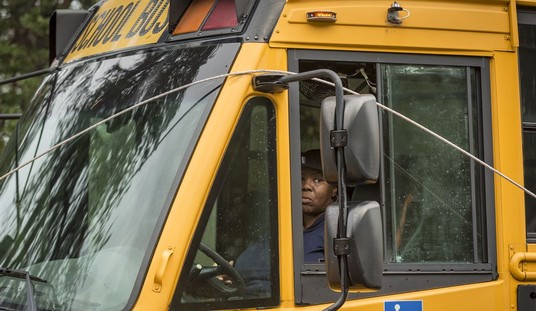Just under a year ago I wrote the following while Paris burned:
They say Beirut is the Paris of the Middle East. Does that mean Paris is the Beirut of Europe? Or is that an insult to Beirut?
A week later my mother visited me in Lebanon after I finally convinced her it was safe. “Thank God we didn’t stop in Paris on the way to Beirut,” she said with an absolutely straight face. And I laughed out loud. Beirut, in her mind, was the epitome of urban disaster areas. Paris, as far as she was concerned, was the greatest city on earth. I loved the sudden inversion.
In hindsight I was naïve. I feel chagrined now after arguing long and hard that no one in Lebanon would hurt her, me, or anyone else. To be sure, even if she had visited during this summer’s war she would have been safe from Lebanese. Israeli warplanes were the hazard I hadn’t considered.
Lebanon was not as safe as I thought, and it’s less safe today. Last week someone fired rockets at the Buddha Bar across the street from UN headquarters. I took my mother to that bar. The attackers might be Syrian, but they also could be Lebanese. Nobody knows.
Perhaps I was dumb for suggesting that Beirut is safer than Paris even in jest. But sometimes I wonder.
Before next week’s anniversary of the Clichy riots, the violence and despair on the estates are again to the fore. Despite a promised renaissance, little has changed, and the lid could blow at any moment.
The figures are stark. An average of 112 cars a day have been torched across France so far this year and there have been 15 attacks a day on police and emergency services. Nearly 3,000 police officers have been injured in clashes this year. Officers have been badly injured in four ambushes in the Paris outskirts since September. Some police talk of open war with youths who are bent on more than vandalism.
“The thing that has changed over the past month is that they now want to kill us,” said Bruno Beschizza, the leader of Synergie, a union to which 40 per cent of officers belong. Action Police, a hardline union, said: “We are in a civil war, orchestrated by radical Islamists.”
I doubt this is the work of radical Islamists. Violence in France looks a lot more like race war and class war than jihad. Either way, burning cars — even at the insane rate of 112 every day — certainly beats massacreing commuters on the way to work in the morning or blowing up tourist hotels.
Most of the violence is in the outskirts of Paris rather than in the city center. The Buddha Bar and the UN are in downtown Beirut. Parts of Paris may be safer than anywhere in Beirut if you forget, for the sake of discussion, that no one ever gets mugged in Lebanon. There is no chance at all that any country will drop bombs on Paris from warplanes.
Comparing Beirut and Paris is, I admit, a bit ridiculous.
Even so, 15 attacks every day against French police and emergency services is astounding. 3,000 injured police officers is an incredible number. How many cars can even be left if 115 are burned every day?
We’re not talking about jihad or a war against infidels here. But is it crazy to ask how many Israeli police and soldiers have been injured or killed by Hamas and Hezbollah at the same time?
The point is not that France resembles Israel in any meaningful way, or that the suburbs of Paris are a match for the dahiyeh south of Beirut which was controlled by a private Iranian army. I’m comparing these places because I want to draw attention to the enormous disconnect between perception and reality.
If 80 percent of the foreign correspondents in Israel, Iraq, and Lebanon moved to France and covered that conflict instead, France would look like a frightening place indeed. It would, in all liklihood, look more dangerous than it really is. (No cars are burned in the Latin Quarter as far as I know.) Instead the Middle East — with the probable exception of Baghdad — looks more dangerous than it really is.
I’m not saying the Middle East isn’t dangerous. Some parts of it are. Other parts are safe, though. Even some of the dangerous places are reasonably safe most of the time. My friend Michael Dempsey described Beirut as a “safe dangerous” place, which nails it exactly I think.
My friends and family no longer give me a hard time when I travel to places they wouldn’t go. Every time I come home unharmed and untraumatized they lighten up a little bit more. But people who don’t know me well, who don’t read my blog, and who don’t follow the Middle East closely still have a hard time understanding what it’s really like across the Atlantic and the Mediterranean. My wife has decided that she will no longer tell people when I’m out of town.
“So,” one of her clients said the other day. “What hell-hole is your husband in now?”
“Is your husband in Iraq?” our corner grocer asked her in August.
“No,” she said. “He’s in Israel.”
“Oh no!” he said, genuinely alarmed.
She hears this sort of thing constantly. It stresses her out, and it annoys me.
The media make the Middle East look like one never-ending massacre and explosion. France, meanwhile, looks like a storybook land of gourmet cheeses, cafes, and castles. So perhaps I can be forgiven by responding to one cartoon with another, as long as I admit that’s what I’m doing. It’s fun telling people who think I need body armor in the Levant that Paris is the Beirut of Europe.









Join the conversation as a VIP Member